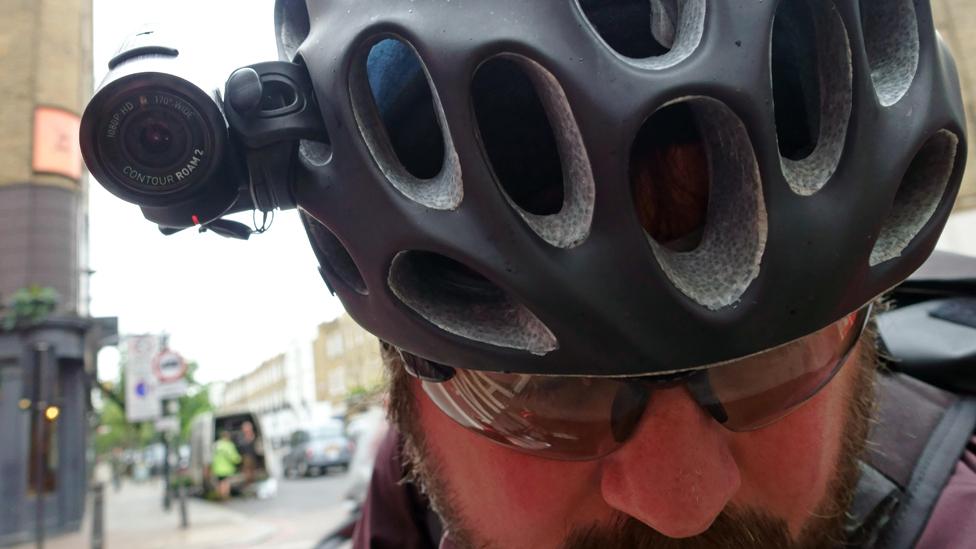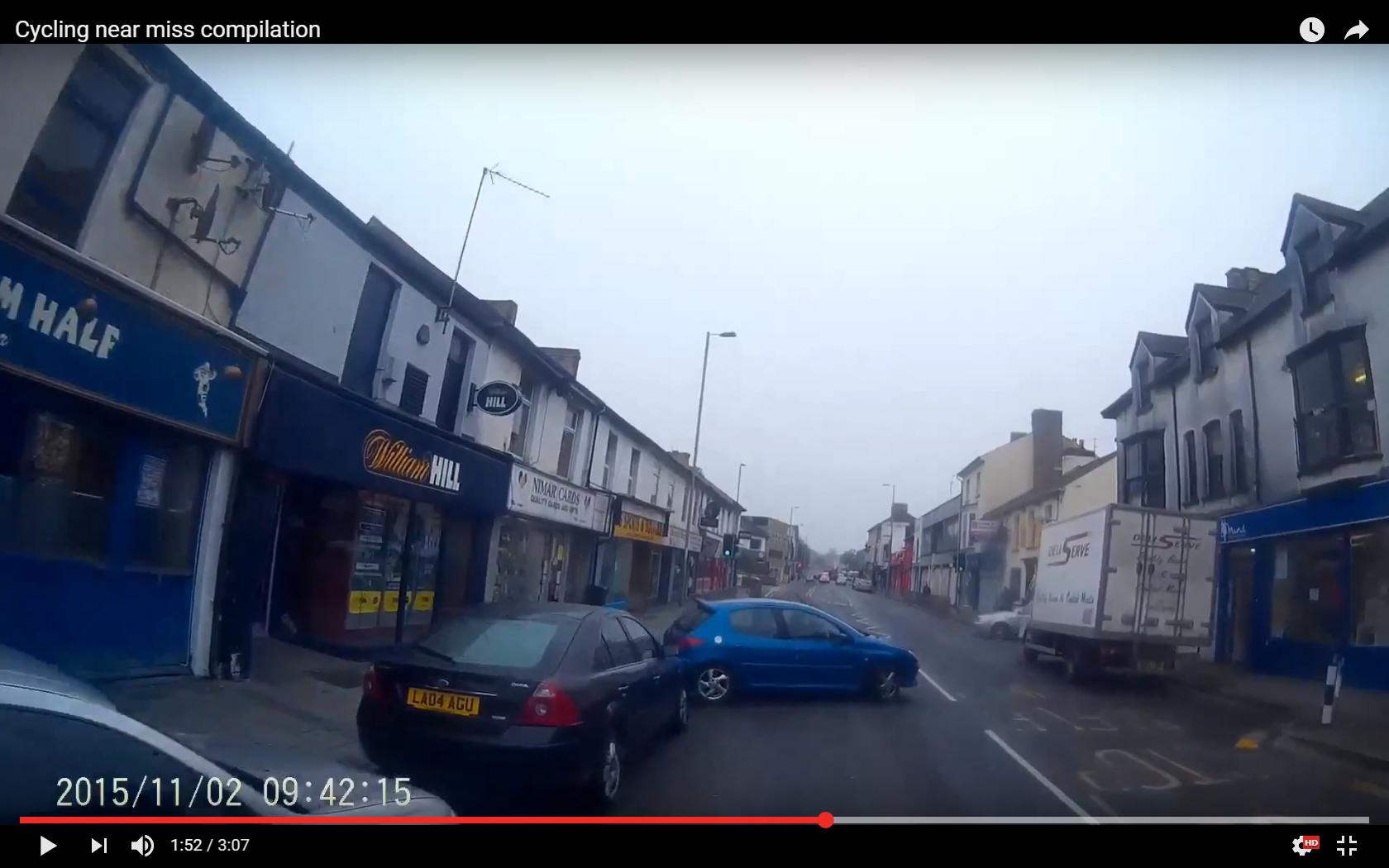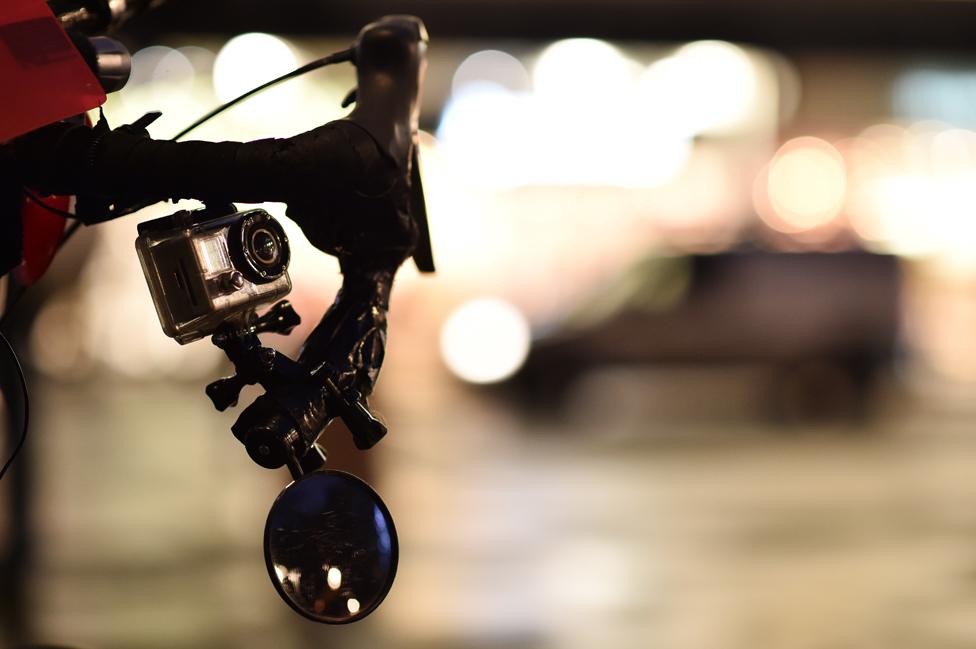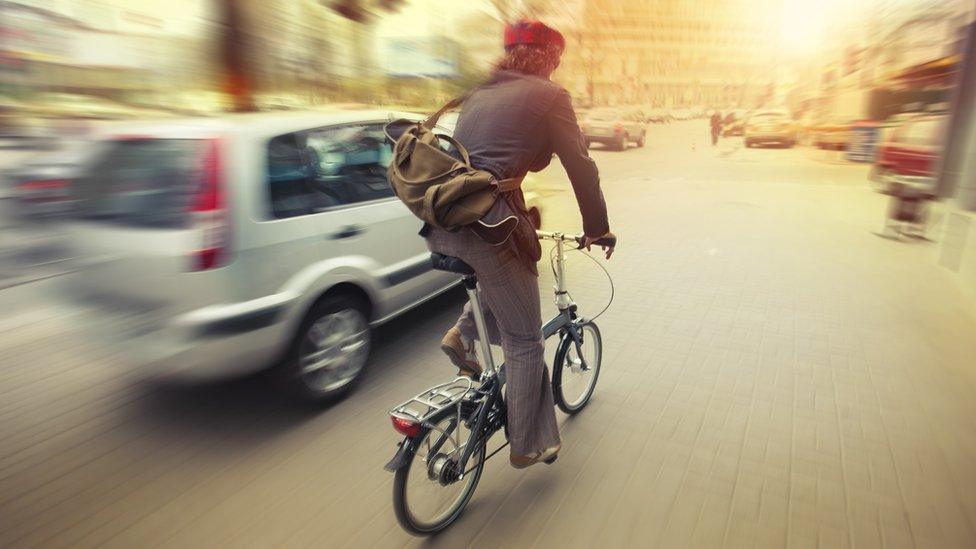Do cycle cameras make the roads any safer?
- Published

A foul-mouthed verbal assault by a motorist on the BBC's Jeremy Vine as he rode his bicycle was captured on camera. The video is the latest to be posted on social media by a cyclist, but what difference does such footage make to road safety?
Jeremy Vine was cycling home down a narrow road last Friday when he was tailgated by an impatient driver who jumped out of her car, shouted at him and appeared to kick his bike. Later she threatened to "knock [Vine] out" and warned: "I could be done for murder."
Like many other cyclists who've experienced similar treatment, Vine had filmed the incident and posted footage on Facebook, as well as passing it on to police.
Cycle cameras were first sold as accessories for recreational riders to allow them to edit and create films of their journeys. One of the first was the GoPro video camera, external, which launched in 2006.
But it soon became apparent they were useful for recording collisions. Cyclists began posting near-misses and other dangerous driving on video-sharing websites like YouTube.

Cyclists share near collisions on social media sites such as YouTube
The roads can be dangerous places for cyclists, who are particularly vulnerable to injury. In 2014, 21,287 cyclists were injured in reported road accidents, according to the Royal Society for the Prevention of Accidents (RoSPA). This included 3,514 who were killed or seriously injured.
There aren't any statistics showing if helmet cameras have made the roads any safer for cyclists. However, motoring journalist Quentin Willson thinks the more cameras - including dashboard cameras in cars - there are on the roads the better, because they are more likely to deter bad behaviour.
"I think cars should have dashcams and cyclist should have headcams. If drivers and cyclists are driving properly, then neither should have a problem with being filmed," he says.
Conventional methods enforcing road safety aren't working, Willson says. He'd like to see insurance companies offering discounts to drivers with dashboard cameras to help tackle problems caused by a "motoring underclass" of bad and often uninsured drivers: "They may be angry being filmed but anything that brings them to book is good, I think."
Footage of road rage attacks on cyclists has a habit of going viral. A driver caught on camera verbally abusing a cyclist in south London last year suffered a torrent of abuse, external online after the footage was shared on social media.
But there are concerns that as well as inflaming confrontations, such footage may also be fuelling a motorist vs cyclist mentality. In 2014, The Daily Telegraph's Andrew Critchlow warned that, external "self-appointed digital road vigilantes" were doing more harm than good.

Do "digital road vigilantes" do more harm than good?
Comment boards under road rage videos often descend into a war of words between motorist and cyclists, each accusing the other of unsafe road use. Facebook comments, external under Jeremy Vine's video are also mixed.
Michael Hutchinson, former Commonwealth Games cyclist and columnist for Cycling Weekly, is sceptical about the effectiveness of cycle and dashboard cameras.
"I don't think, day-to-day, it makes a difference to safety on the roads. I think cameras aren't that common at the moment and so people who are reacting on the roads, like in the Jeremy Vine case, probably don't stop to consider if they are being filmed before taking action," Hutchinson says.
"In these incidents I suspect the perpetrators aren't rationally thinking their behaviour through."
Hutchinson does think that they can play an important part after a road rage attack has taken place, however: "One problem cyclists often have is when they report an incident to police, they are told 'prove it', and helmet camera provides some evidence. It also helps with insurance providers if it's one person's word against another."
Today, both helmetcam and dashcam footage are increasingly used as evidence in both civil and criminal courts, according to personal injury solicitors Claims Action. They play the same role as CCTV footage.
According to the company's website, external, in order to admit a video recording from a helmet camera as evidence, it must be downloaded onto a CD and be accompanied by a certificate countersigned by a solicitor stating that it has not been altered.
However, while road rage incidents may generate clicks and shares, this kind of assault doesn't appear to be the biggest danger facing cyclists.

According to RoSPA figures for 2013, "failing to look properly" was the highest known contributory factor to an accident involving at least one cyclist and another vehicle. Their records showed that one third of the 9,375 incidents were caused by cyclists while two thirds were caused by drivers of other vehicles.
And while the presence of a camera might conceivably make a motorist think twice about launching a road rage attack, it's less clear whether it will encourage drivers and cyclists alike to pay attention to the road.
Follow @BBCNewsMagazine, external on Twitter and on Facebook, external